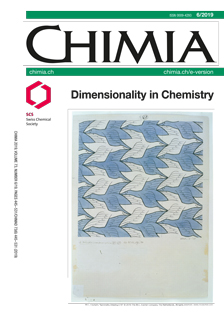Nano-thin 2D Soft Materials – Design Principles and Prospects
DOI:
https://doi.org/10.2533/chimia.2019.468PMID:
38549208Keywords:
2d polymer, Nanosheet, Nanotube, Self-assembly, Supramolecular polymerAbstract
Established less than a decade ago, the fascinating field of two-dimensional (2D) soft materials is advancing continuously towards widespread recognition. After demonstrating the feasibility of obtaining nano-thin supramolecular sheets and morphologically related tubular objects, considerable efforts are being undertaken to explore the functional potential of soft nanosheets. Self-assembly is a major tool for the controlled formation of nanometre-sized 2D objects. In this account, we share our current understanding of the structural requirements to direct the self-assembly of water-soluble, negatively charged oligomers in 2D. The discussion covers some promising areas of utilization such as the reporting of weak mechanical perturbations, the assembly of light-harvesting antennae, the transfer of excitation energy and the polymerization of pre-organized assemblies. The systems presented in this work illustrate the potential of 2D supramolecular materials as complementary systems to their covalent counterparts.Funding data
-
Schweizerischer Nationalfonds zur Förderung der Wissenschaftlichen Forschung
Grant numbers 200020_169030
Downloads
Published
2019-07-26
Issue
Section
Scientific Articles
License
Copyright (c) 2019 Swiss Chemical Society

This work is licensed under a Creative Commons Attribution-NonCommercial 4.0 International License.
How to Cite
[1]
M. Vybornyi, H. Yu, R. Häner, Chimia 2019, 73, 468, DOI: 10.2533/chimia.2019.468.







